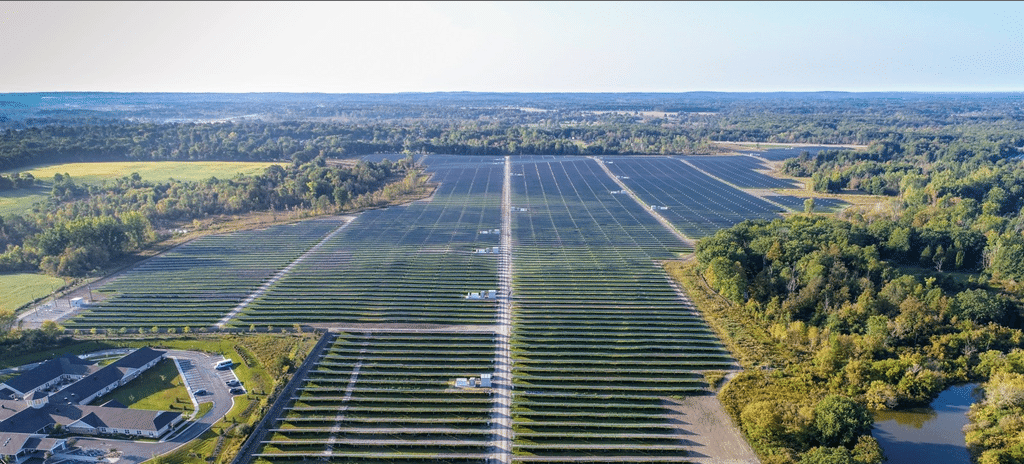In Michigan, as in other parts of the United States, utilities are being dragged into the 21st century. On Friday the state’s two largest power utilities, DTE Energy and Consumers Energy, announced that they had reached a deal with Clean Energy, Healthy Michigan to pursue 25% renewable energy by 2030.
As their part of the deal, the Tom Steyer-backed campaign will drop its ballot campaign to force the utilities to procure 30% of their electricity from renewables by 2030. Clean Energy, Healthy Michigan reports that it already gathered 350,000 signatures for its ballot initiative.
The new compromise will represent an extension of the state’s current renewable energy mandate, which requires that utilities source 15% of their electricity from renewables by 2021. The utilities have branded the agreement as a 50% by 2030 “Clean energy goal,” by stating that they are planning to use energy efficiency to make up the other 25%.
More renewables, but also gas
Of the two utilities, Consumers has the more specific plans for clean energy, with a goals to reach 40% renewable energy by 2040 and phase out all of its coal plants by that date. By contrast, DTE Energy has set a target to reduce carbon emission 80% by 2050.
Well before the agreement to move to 25% by 2030, DTE announced plans to build another 6 GW of renewable energy, in addition to the 1 GW that it already has online, but also 3.5 GW of gas plants. The first of these won approval by Michigan regulators a month ago, over widespread protests and one regulator citing a lack of examination of alternatives.
While doing so, DTE is also shuttering coal plants. The company shuttered three coal-fired units in 2016, and plans to shut down another 11 by the early 2020s. Consumers is moving more quickly, and shut down seven of its 12 coal plants in 2016.
Details on new clean energy procurement are expected in the two utilities’ next integrated resource plans.
This move to adopt more renewable energy while retiring coal and building new gas plants is similar to the long-term plans released by Duke Energy and Dominion Power. When taken in total, these plans show that unless forced to by state mandates or other means, investor-owned utilities will usually choose to slow-walk the transition to renewable energy, and to meet carbon reduction goals by shifting to gas.
No friends to solar
According to data compiled by the U.S. Department of Energy, in 2017 renewable energy comprised 8.4% of Michigan’s electricity generation, with wind representing just over half of that. This is slightly less than the national average. Solar made up a mere 0.1% of the state’s generation and, despite showcase projects like DTE Energy’s 48 MW Lapeer Solar Park, the state’s installed capacity was only slightly above 100 MW at last count.
DTE and Consumers appear to be trying to keep it that way. Both utilities supported the state’s dismantling of net metering, and DTE Energy’s plans to meet the state’s existing renewable energy mandate focus almost entirely on wind. In communication with pv magazine, DTE has stated that it plans to build additional renewable energy beyond that required by the mandate, however it did not provide details as to how much solar or when.
This content is protected by copyright and may not be reused. If you want to cooperate with us and would like to reuse some of our content, please contact: editors@pv-magazine.com.









The utilities were going to build renewables whether they struck this deal or not. Solar just makes sense economically now. This is really about slowing the mandate down just enough so that they can kill net metering and maintain their Monopoly. That’s unfortunate because the antiquated model of generating electricity miles away from the consumer, losing much of it along the way, won’t get us to more dynamic, resilient, micro-grids. At least I can start eating fish again in Michigan after the Mercury pollution from the coal burners stops. Anybody know how long the ecosystem will take to bioremediate it?
Michigan just got hosed by this San Francisco activist. (Funny, Progressives despise “money in politics” except when it’s their money.) In California, the bunkum Steyer is pushing has driven electric prices to at least double what my extended family presently pays on our home in Muskegon. Wind, solar and unicorns is such a fiasco in Southern California that consumers have to pay Arizona to take excess solar power on sunny days and then we pay a huge premium for conventional power when it is cloudy. But, heh, we feel good and are oh so “pure” and green — why, we are even making it possible for China to generate more cheap power burning old truck tires. And the California rates are expected to potentially double by Steyer’s 2030 utopian goal year. If there is any shred of “democracy” left in Michigan, the people should raise hell with the PSC and send this George Soros clone, billionaire elitist back to his castle by the Bay. Michigan, you just took it in the back.
Hello Mark. That’s an interesting statement. Perhaps you’d like to provide some documentation for the claim that Steyer’s ballot campaign “has driven electric prices to at least double what my extended family presently pays on our home in Muskegon”. I’m curious about 1) your numbers for this and 2) how your extended family would experience rate increases given that the agreement for the increased renewable energy has just been passed?
I’m also curious if you are aware of the trends in the costs of large-scale wind and solar compared to other forms of electricity generation. I’m suspecting that your information may be somewhat out of date. For convenience, please see the following chart by global consultancy Lazard, which shows large-scale wind and solar as the least expensive forms of new generation.
https://www.lazard.com/media/450337/lazard-levelized-cost-of-energy-version-110.pdf